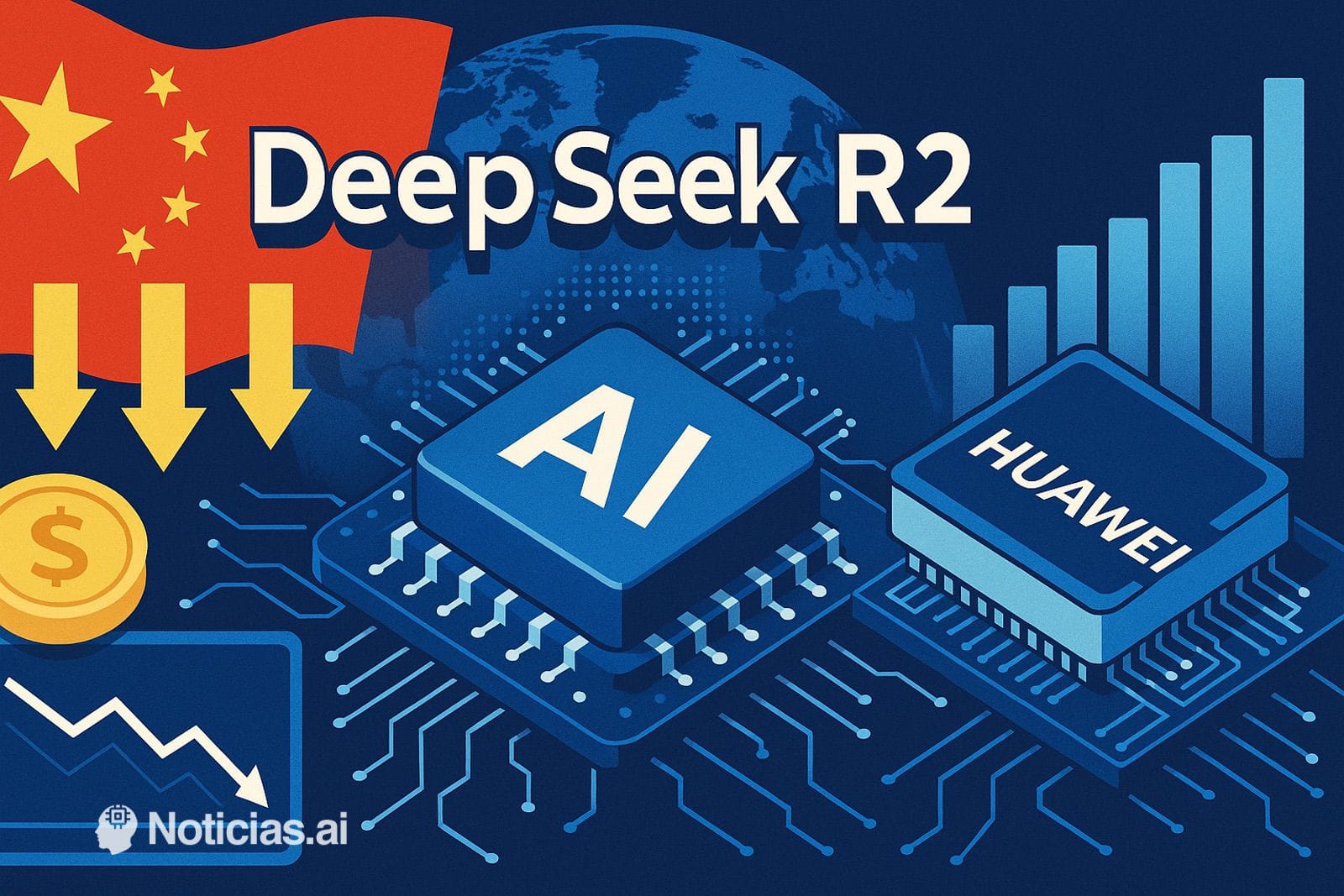Global artificial intelligence could be facing a new shakeup. DeepSeek, the Chinese company that already surprised with its R1 model, is reportedly about to launch the DeepSeek R2, a next-generation model that promises not only to compete head-to-head with giants like OpenAI and Google but even surpass them in cost, performance, and technological autonomy.
While DeepSeek has not yet made an official announcement, various Chinese sources have begun leaking information that outlines a revolutionary landscape in the AI market.
What is known about DeepSeek R2 so far?
According to reports, the DeepSeek R2 will feature 1.2 trillion parameters, utilizing a hybrid Mixture of Experts (MoE) architecture, an evolution that combines the best of dynamic expert models with dense layers for superior efficiency in complex workloads.
This hybrid approach would not only maximize performance but also optimize resources, a key aspect in training and inferencing large-scale models.
In terms of cost, the R2 promises to be a true disruptor: its operation is estimated to be 97.3% cheaper than that of GPT-4o. With projected prices of $0.07 per million input tokens and $0.27 per million output tokens, the model would be far below the current rates of major Western AI providers, making DeepSeek R2 an extremely attractive option for businesses and developers.
Independent training: Huawei and the end of technological dependence
One of the most striking elements of the rumor is the method used to train DeepSeek R2: by utilizing Ascend 910B chips from Huawei. The model reportedly achieved an 82% utilization of the cluster resources, translating to 512 PetaFLOPS of computing power at FP16 precision.
This detail is significant: it represents a decisive step toward Chinese technological self-sufficiency, minimizing dependence on US components like Nvidia or AMD chips, which have historically dominated AI training.
This commitment to domestic hardware reinforces China’s strategy to build a completely independent supply chain in strategic sectors like artificial intelligence, a move of enormous importance in an increasingly tense geopolitical context.
Preliminary results of DeepSeek R2: improved vision and academic reasoning
Regarding performance, the leaked data is also impressive:
- 89.7% on C-Eval 2.0, one of the main benchmarks for measuring understanding and reasoning in academic AI.
- 92.4% on COCO, an international reference for computer vision tasks.
These figures would place DeepSeek R2 at par—or even above—models like GPT-4 Turbo or Gemini 2.0 Pro, with significantly superior cost efficiency.
A threat to Western AI hegemony?
The potential launch of DeepSeek R2 adds pressure on artificial intelligence companies in the United States and Europe. Not only because of the technical improvement it represents but also due to the economic model it proposes: top-tier AI at drastically lower costs.
If the data is confirmed, DeepSeek would demonstrate that it is possible to train and deploy large models without the multi-million dollar investments that have seemed indispensable until now. And, above all, without relying on Western technological infrastructures.
This could trigger:
- A price war in AI services.
- A reconfiguration of the global market for foundational models.
- An acceleration of technological self-sufficiency efforts in other countries.
Caution: these are still rumors
It is important to note that all this information, although consistent with DeepSeek’s recent trajectory, is based on leaks and rumors. Until the company makes an official presentation, the data should be taken cautiously.
Nonetheless, the precedent of the DeepSeek R1, which significantly impacted U.S. financial markets by demonstrating China’s advances in AI, lends credibility to the possibility that the R2 could once again shake up the playing field.
Conclusion
With DeepSeek R2, China might not only match the West in the development of advanced artificial intelligence but also redefine the rules of the market with a more efficient, cost-effective, and technologically sovereign approach.
In an increasingly competitive and tense world, innovation is no longer just a matter of technological capability: it is a matter of strategic independence. And DeepSeek seems to have grasped this perfectly.
The global tech sector awaits eagerly for the next move.

